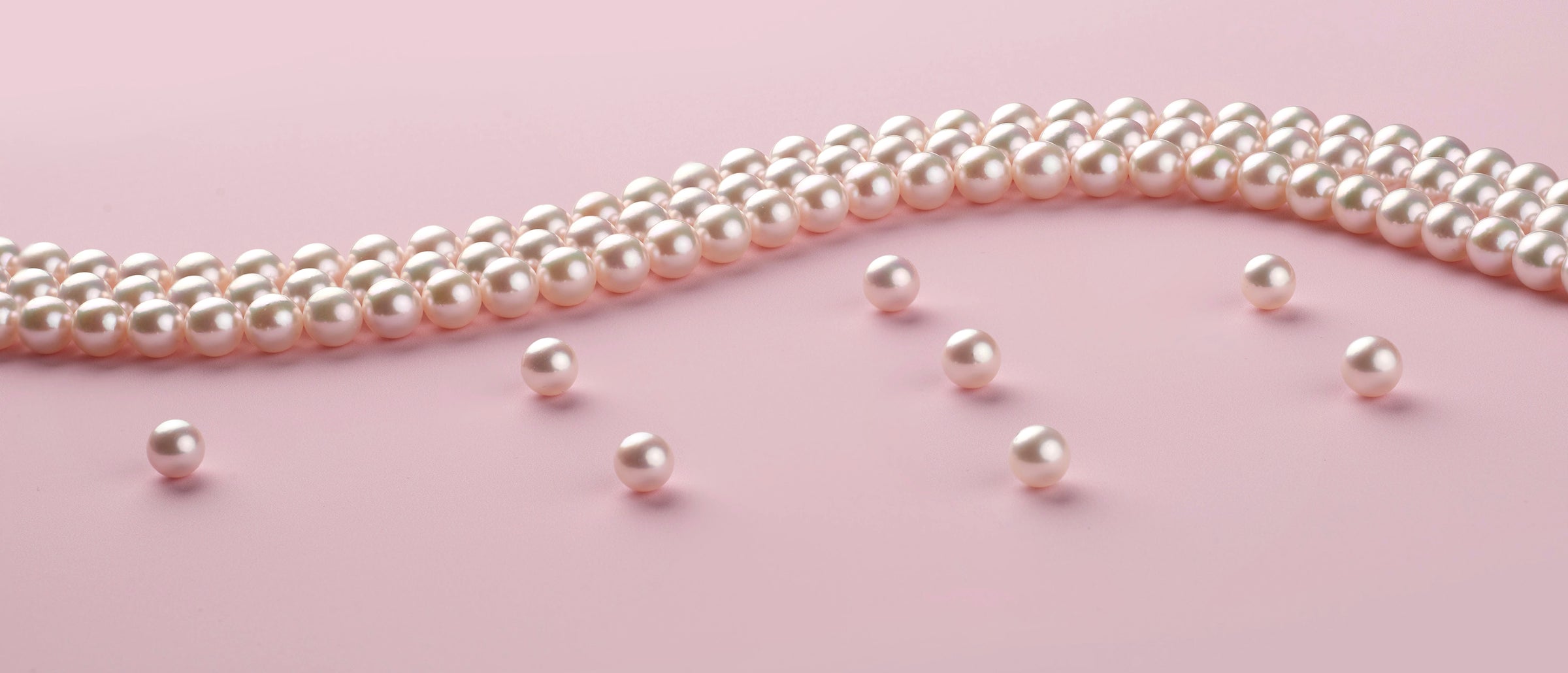
The akoya pearl is a saltwater cultured pearl from the akoya oyster (Pinctada fucata martensii). Because akoya are the most abundant type of saltwater pearl with the longest cultured history, information on akoyas is abundant! Akoya are considered to be the classic pearl used for necklaces and other pearl jewelry, with perfect round shapes, bright mirror-like luster and neutral colors, akoya pearls are favored by most retailers and consumers as the classic pearl choice.
How do they compare to other types of pearls?
Unlike their freshwater cousins, akoya pearl oysters rarely produce more than two pearls per harvest. The oysters are nucleated with a bead composed of mother-of-pearl and a small piece of mantle tissue. This bead becomes the nucleus of the pearl and is the reason akoya pearls are more often perfectly round. This shape, combined with the high-luster found on top-quality akoya pearls, and their relative rarity compared to freshwater pearls, give akoya pearls a higher perceived value.
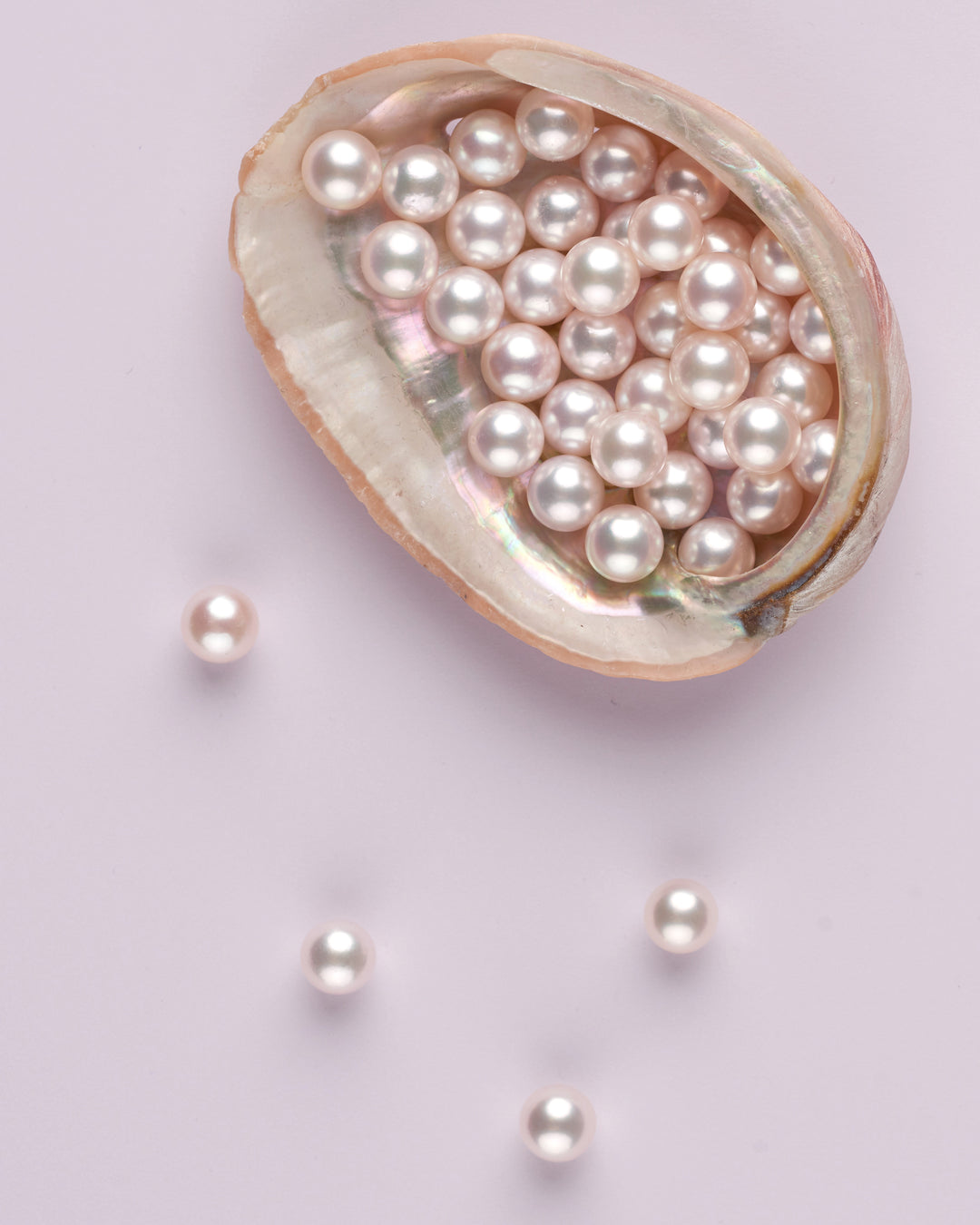
The more you know...
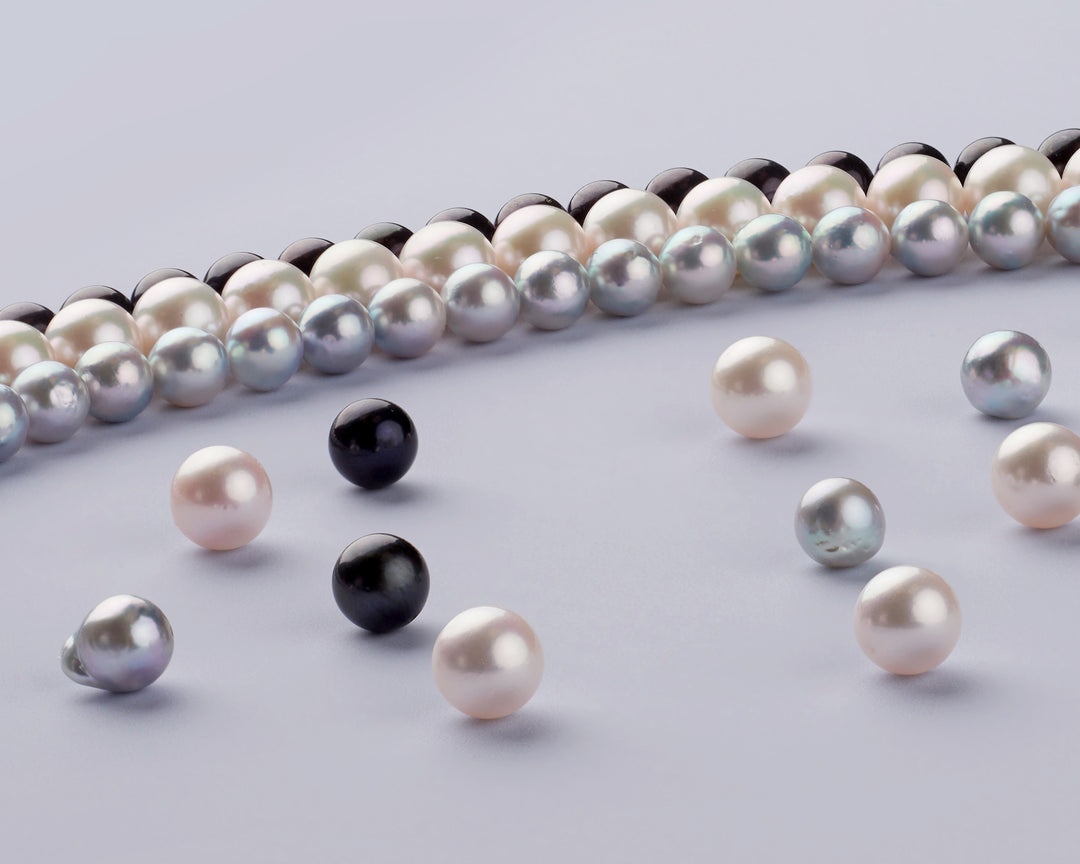
What colors, shapes, and sizes are available?
An interesting piece of akoya pearl trivia is that the akoya oyster is the smallest commercially farmed, pearl-producing oyster. An average akoya pearl is only 7 mm, while an average South Sea pearl is in the 12 mm range. Akoya pearls are currently being harvested in sizes from as small as 1 mm up to the very rare 10-11 mm.
Akoya pearls are inherently round, although every harvest produces a percentage of baroque and keshi pearls, which tend to have the bright luster and shine common to the akoya, but a shape and look reminiscent of a freshwater or baroque South Sea. Akoya pearls, unless color-treated, have neutral colors and overtones. Most pearls are white to grey, with pink, green, or silver overtones. Occasionally, akoya pearls are blue with silver and pink overtones, but these colors are extremely rare. Akoya pearls are never naturally black – black akoya pearls have undergone either Cobalt-60 radiation treatment or treatment with an organic dye.
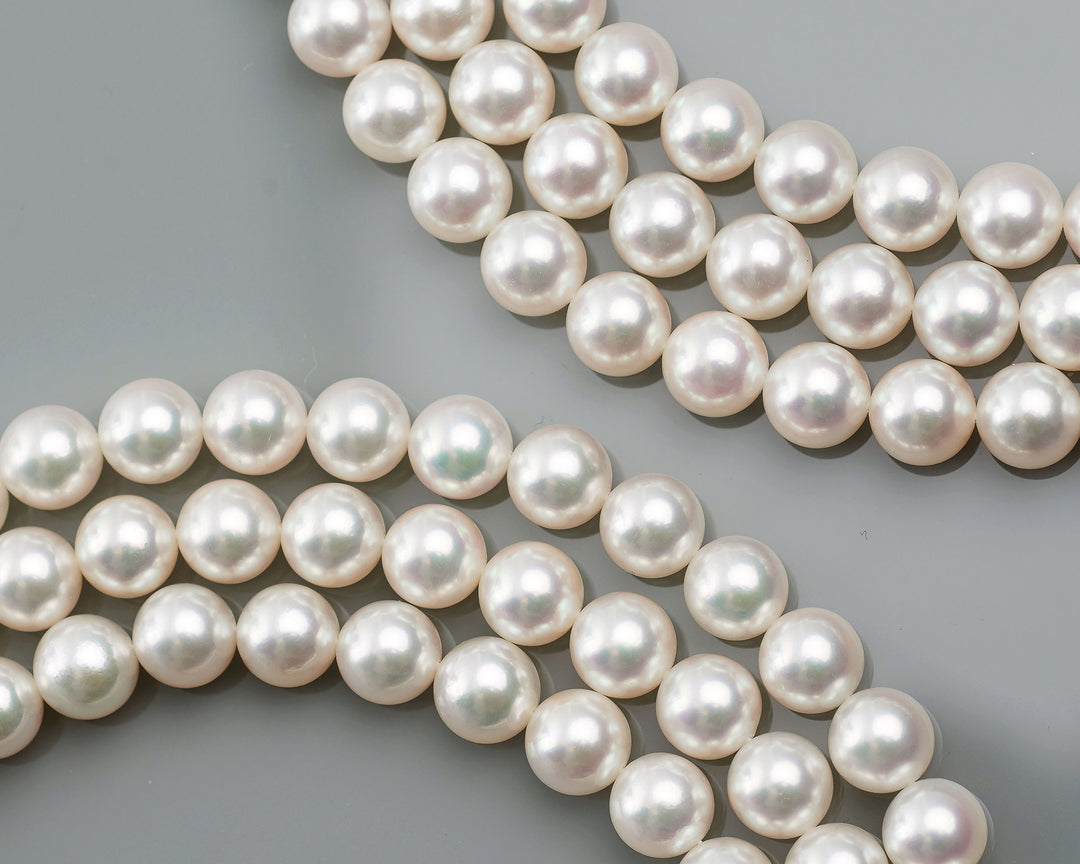
How rare and valuable are they?
While the akoya pearl is considered to be (overall) more rare and valuable than the freshwater pearl, it is only the third most valuable commercially produced pearl, falling behind South Sea and Tahitians. It is still common to find top-quality akoya pearl strands retailing for more than $10,000, however. This would be average for a Tahitian strand and low for a South Sea, but much higher than a comparable freshwater pearl necklace.
For more information about pearls, feel free to ask one of our team members via phone, email or live chat. We are the experts on pearls and can answer any questions you might have regarding akoya pearls.
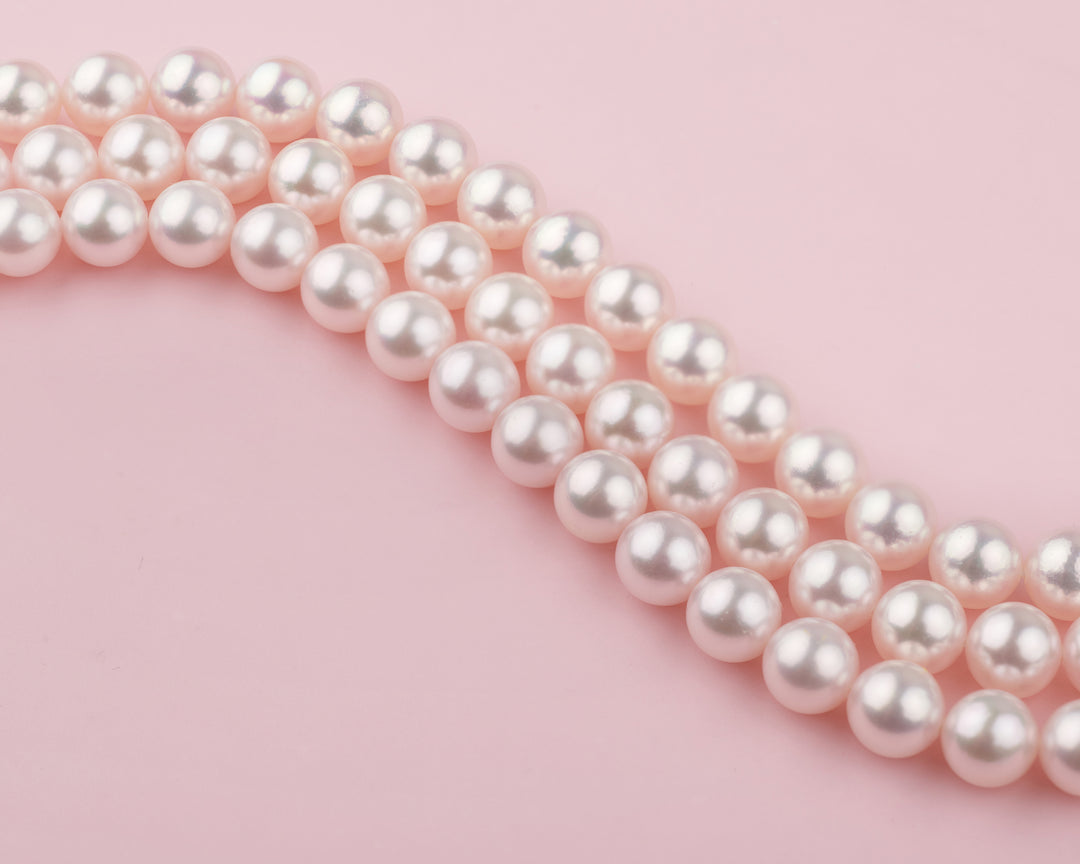
Where do they come from?
Akoya pearls are currently farmed in Japan, China and to a lesser extent, Vietnam, Thailand and Australia. The vast majority of the world's akoya pearls are produced in Japan, which is the undisputed akoya pearl producing center of the world. China was once a genuine contender, but Mother Nature nearly destroyed the Chinese akoya industry in 2007 with back-to-back typhoons, and it has struggled to regain its footing ever since.









